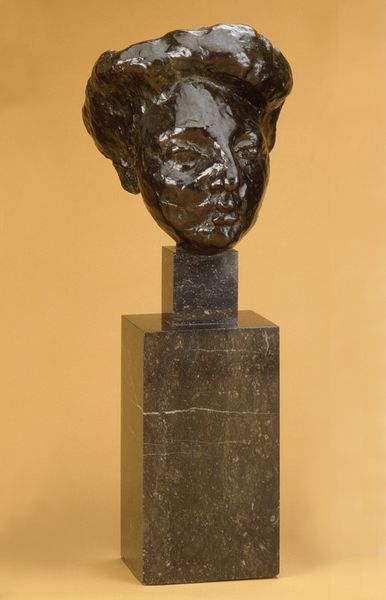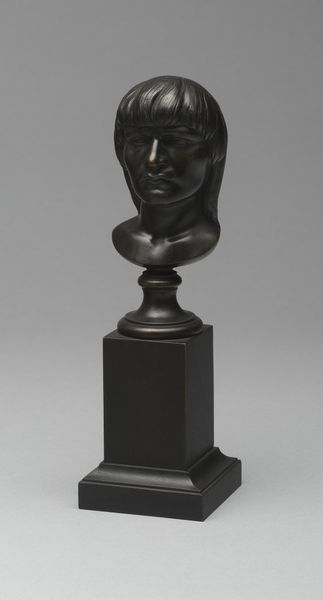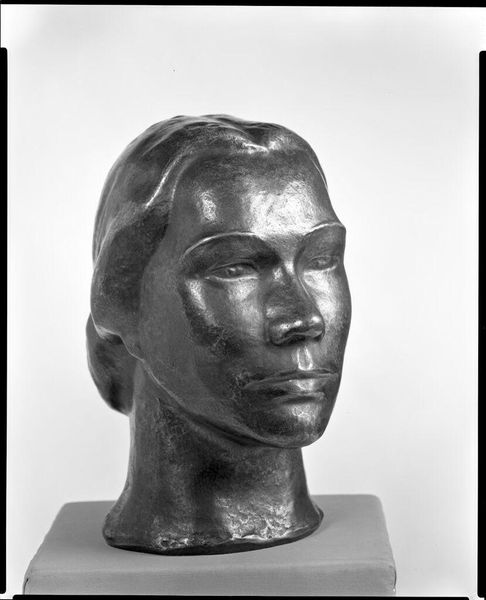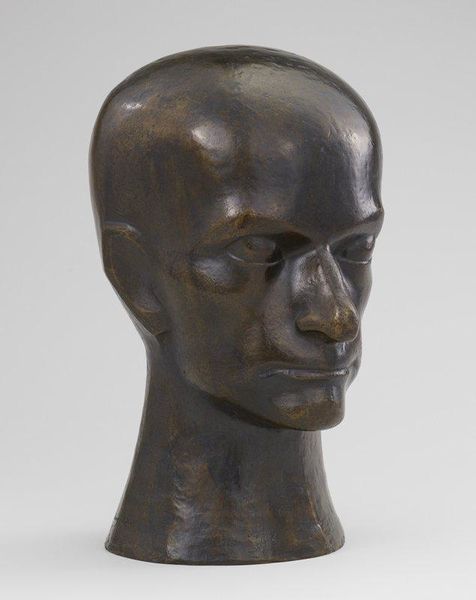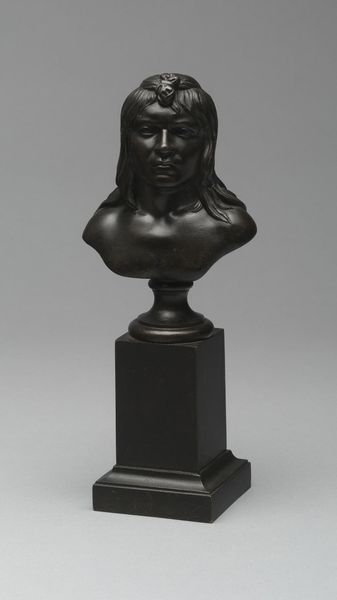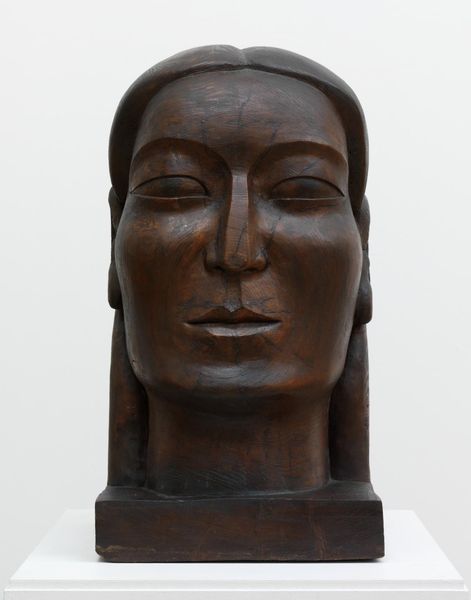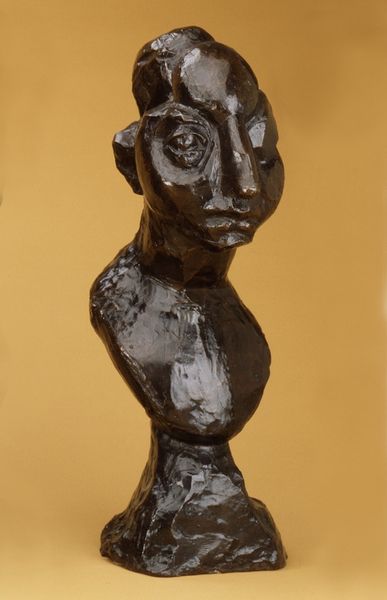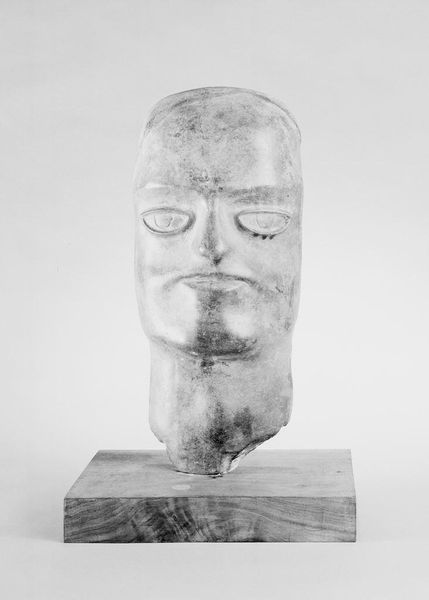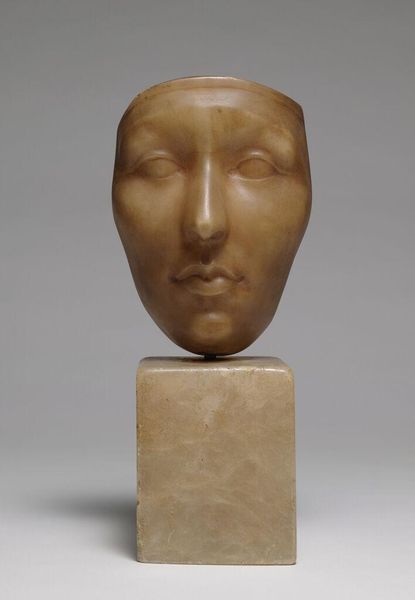
Dimensions: object: 490 x 210 x 264 mm, 10 kg
Copyright: © Estate of Dora Gordine, courtesy Dorich House Museum, Kingston University | CC-BY-NC-ND 4.0 DEED, Photo: Tate
Editor: Here we have Dora Gordine's "Mongolian Head," a bronze sculpture. It's striking how she captures such a serene expression. What can you tell me about the historical context of this piece? Curator: Gordine, as a woman sculptor working in the early 20th century, navigated a male-dominated art world. How do you think her identity might have shaped her choice to depict a "Mongolian Head," especially considering the era's fascination with, and often misrepresentation of, non-Western cultures? Editor: That's interesting. Was she aiming to challenge or reinforce those representations? Curator: It’s a complex question. Sculptures like this were often displayed in ways that reinforced colonial power structures. It invites questions about agency, representation, and the politics of display. Does that make you see the sculpture differently? Editor: Absolutely. It makes me consider the power dynamics inherent in its creation and reception. Curator: Precisely. It's a reminder that art doesn't exist in a vacuum.
Comments
Join the conversation
Join millions of artists and users on Artera today and experience the ultimate creative platform.
tate 7 months ago
⋮
During the 1920s and 1930s, Gordine worked on a series of sculptures that represent the physiognomic characteristics of different races. The idea that people from other cultures can be studied as depersonalised ‘types’ reflects the racist, colonial attitudes of the time. It can also be linked to the nineteenth century fascination for phrenology, a study of the shape of the human skull to discover character traits and mental disposition. Gordine probably made this head in Paris, drawing on popular ideas about Mongolia rather than direct observation and experience. Dora Gordine was born in St. Petersburg in 1906 and died in London in 1991. Gallery label, September 2004


